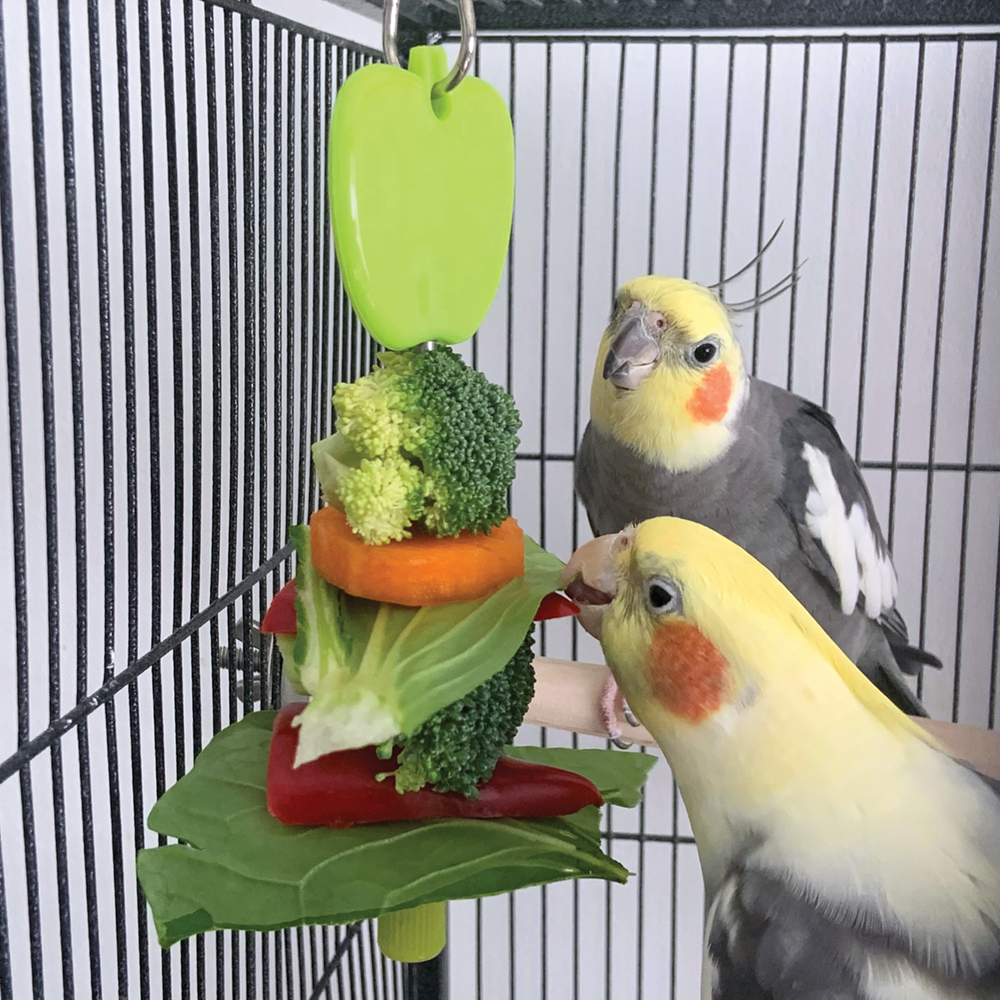Parrot Advice
By: Rosemary Low
Find out more about Peach-faced Lovebirds in this blog by Rosemary Low.
Scientific name:
Agapornis roseicollis
Click here for everything you need for Lovebirds.
Ornithological name:
Rosy-faced Lovebird
Description:
The wild type is distinguished from other Lovebirds by the salmon pink head and breast, blue upper tail coverts and green tail.
However, the many mutations are popular – there are far more than in any other Lovebird species – and some look very different from the wild type. If you see a mutation Lovebird the chances are it is a Peach-faced, although blue mutation Masked Lovebirds are also popular.
Immature birds:
Much duller colouration.
Adult length:
6in (15cm)
Adult wingspan:
About 10in (25cm)
Sexing:
Male and female are alike in plumage but when perched, the female’s abdomen is closer to the perch. Breeding behaviour is different: females tuck strips of nesting material (willow) into the feathers of the rump; males do not normally do this.
Adult weight:
About 55g.
Potential lifespan:
About 18 years.
Status in wild:
Generally common but less so in the east of its range.
Origin:
South-western Africa: Namibia, South Africa and Botswana.
Click here for everything you need for Lovebirds.
Suitability as pets
This depends mainly on two factors. Hand-reared young birds are suitable. Adult birds from an aviary will be nearly impossible to tame, so purchase from a breeder – not from a pet shop. The second factor is that they need a lot of handling and time spent with them to keep them tame.
If two birds are chosen as companions, two males are the best choice as two females might behave aggressively towards each other when adult.
One or two?
The behaviour of a single bird will be much less interesting to observe. A single Lovebird is likely to become lonely and bored. Lovebirds are highly social and need the company of their own kind.
Advantages
Their small size makes them suitable for flat-dwellers.
Cages are not expensive to purchase and feeding one or two birds costs little.
Peach-faced Lovebirds are available in a very large number of mutations, and most breeders will have available a good choice of young in different colours.
Purchase
Take care that Lovebirds are purchased from a reliable source. PBFD (psittacine beak and feather disease) is quite common in Lovebirds. Do not buy birds with missing tail and/or flight feathers as they are likely to be suffering from this disease.
Cages
Most cages sold for Budgies and Lovebirds are too small. Choose the largest cage available with narrowly-spaced bars.
Click here for lots of Lovebird cages.
Most cages for small Parrots come with plastic perches. These are not suitable for small feet. Throw them away and develop the habit of regularly cutting small branches from apple and pear and willow trees. Eucalyptus is safe but not all Parrots like it.
Stripping small branches of bark is highly beneficial — but it means that they soon become shiny and slippery – therefore they must then be changed.
Keep a stock of dowel of very small sizes. Look out for this small dowelling at large bird sales (bird fairs) such as Stafford.
Diet
The basic diet will consist of small seeds (a good quality Parakeet or Budgie mixture) and spray millet . Some Peach-faced Lovebirds like dried figs: they contain numerous tiny seeds.
If Lovebirds are reluctant to eat fruit, try presenting it in a different way. Throw some on the roof of the cage, push wedges of apple into the welded mesh, or use a stainless steel fruit hanger made for birds.
If Lovebirds enjoy vegetables, the fact that they do not eat fruit need not be a great cause for concern. Vegetables such as par-boiled carrot, broccoli, celery and dark green leaves are more nutritious than most fruits. Thawed frozen green peas and sweetcorn can also be given.
Here is lots of tasty Lovebird food.
Egg-laying by single females kept as pets can be a problem – when an excessive number of eggs are laid the female’s life could be threatened.
Of course a calcium supplement should be given (on a favoured item of food) as soon as it is apparent that a female will lay; nevertheless, complications can arise.
Why do single females lay? The stimulus could be stroking and petting of a tame bird by the owner. Pet Parrots should not be stroked on the back as this creates a similar response to a male mating with her.
Secondly, birds fed mainly seed diets are receiving too much fat and carbohydrate; this high energy diet could stimulate laying. Sprouted seeds, fruits and vegetables should be offered year-round as about 30% of the diet.
For lots of Lovebird food please click here.
Thirdly, the bird is exposed to a long day-length due to artificial light. For this reason, the hours of light should be suddenly and severely reduced. This strategy usually stops egg-laying. If this is not successful, the solution could be drugs – hormonal manipulation. (The drug MPA should not be used as it has harmful side effects.)
For everything you need for Lovebirds please click here.














